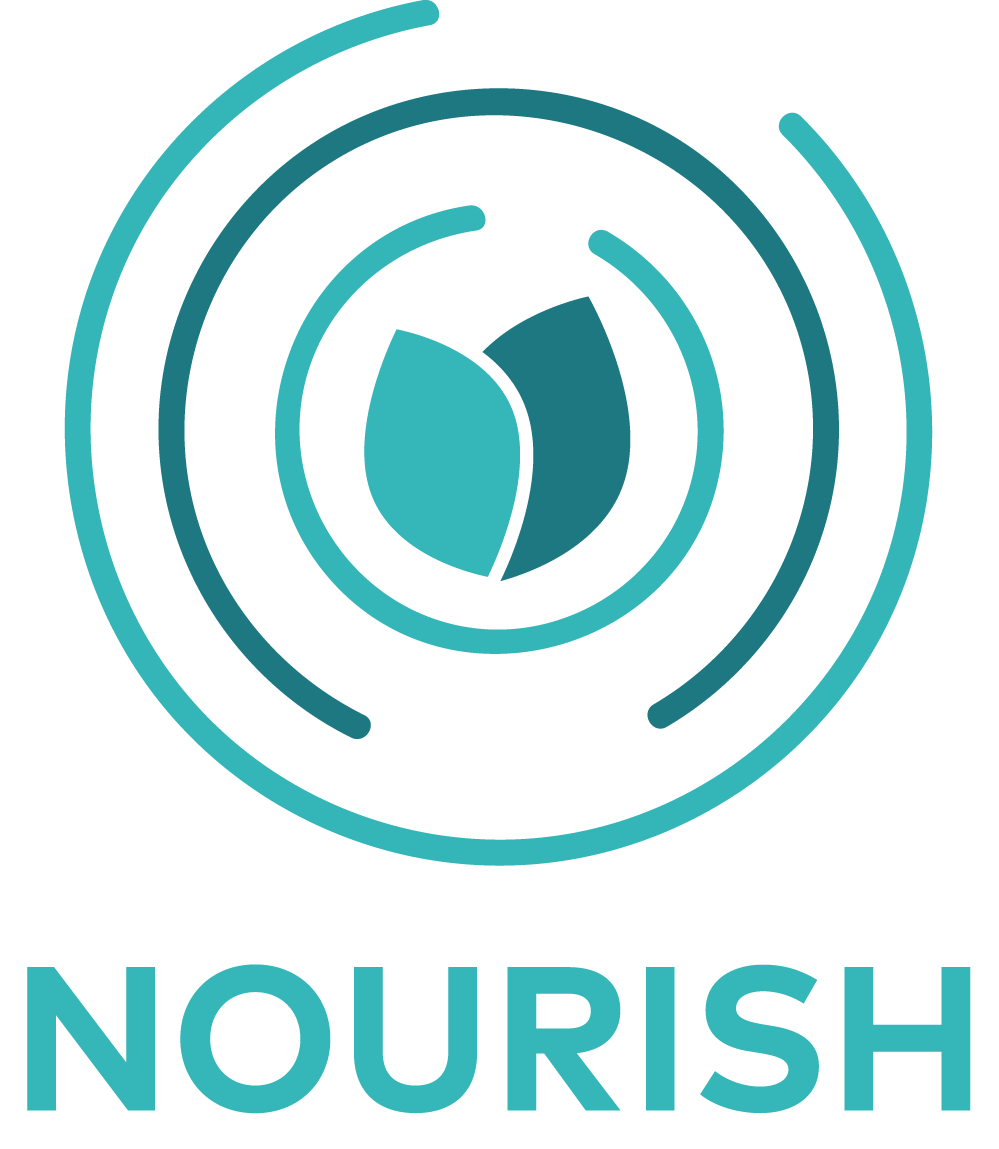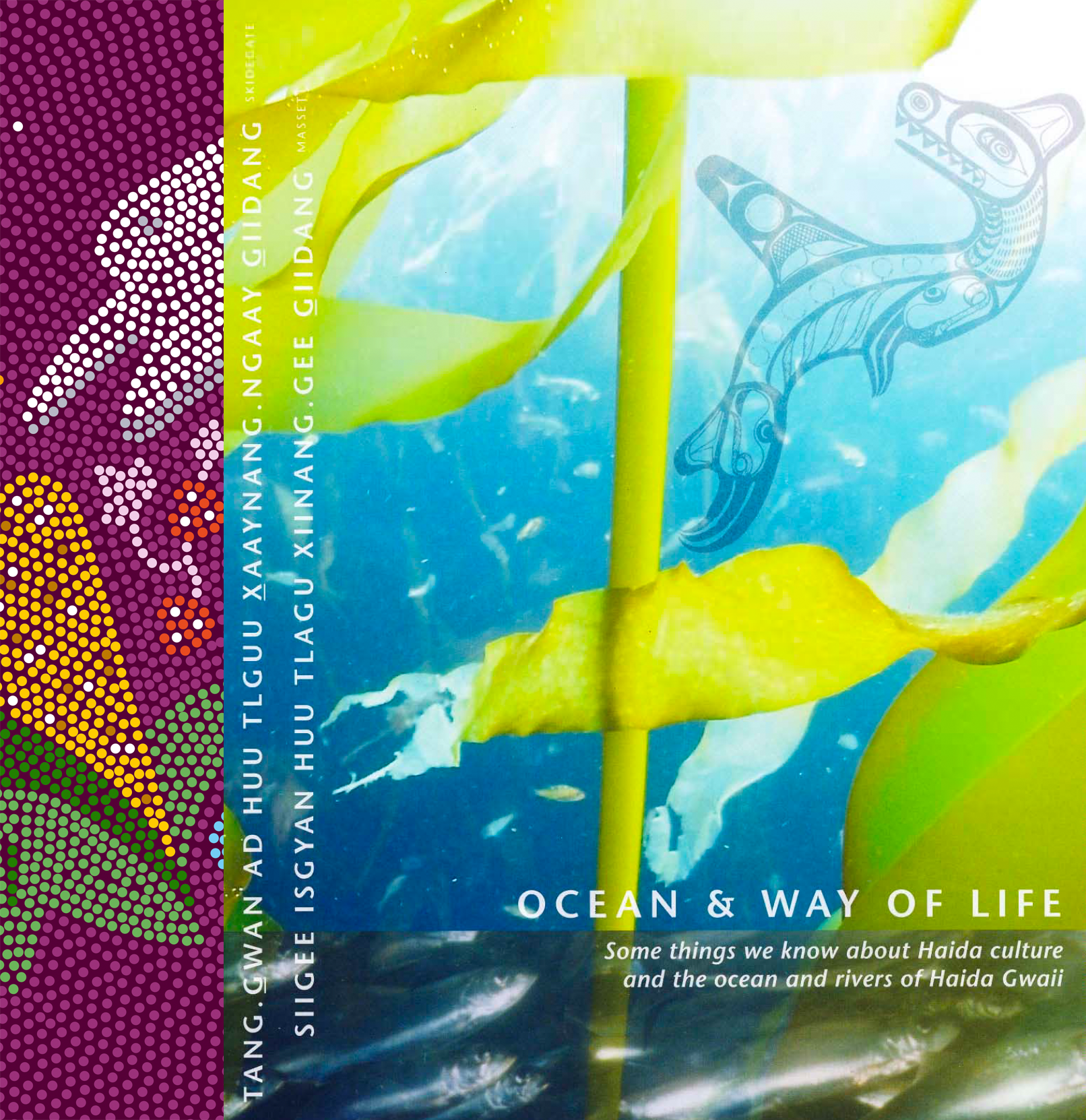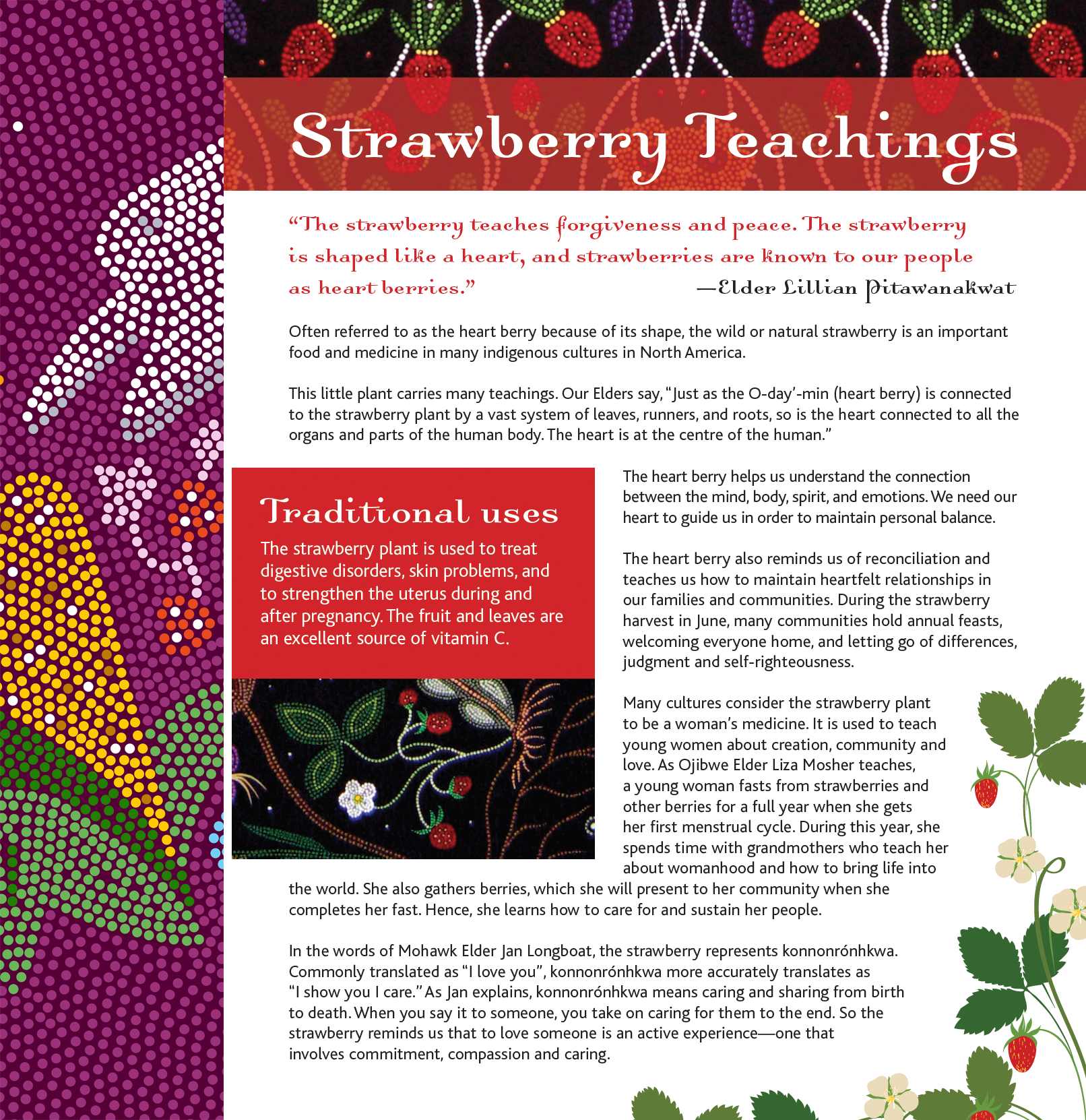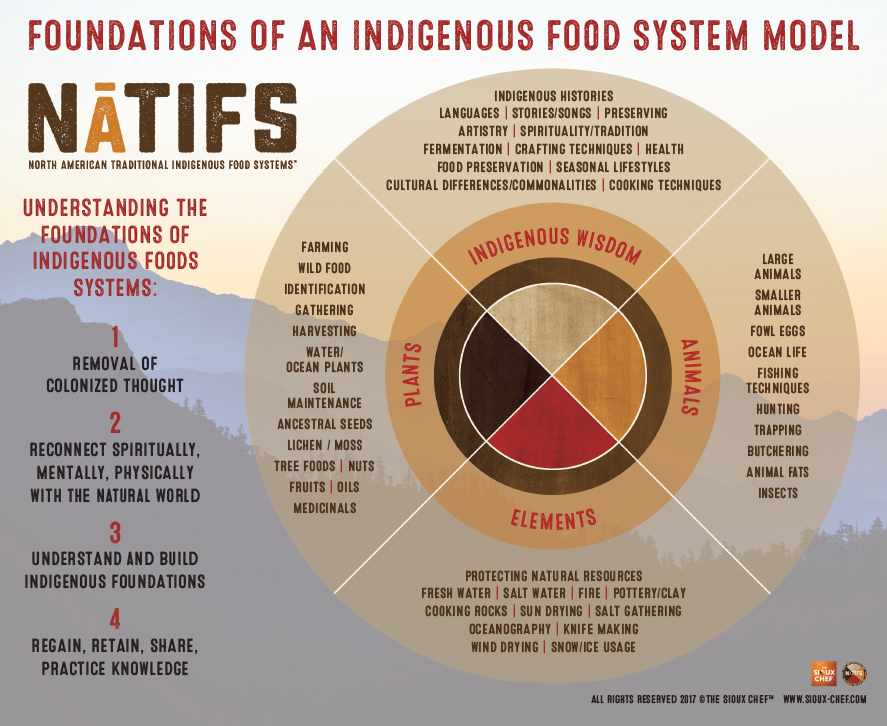This booklet on providing for a healthy family is based on Inunnguiniq teachings, including a substantial section on country foods.
Traditional Foods & Recipes on the Wild Side
Source: Native Women’s Association of Canada
Year: 2012
“This booklet is intended to provide some cultural context, as well as information about traditional foods. You’ll also find a few recipes on the wild side!”
Gifts from Our Relations: Indigenous Original Foods Guide
Source: National Indigenous Diabetes Association
Year: 2020
“The National Indigenous Diabetes Association (NIDA) presents this resource booklet entitled “Gifts from our Relations”, which consists of commonly consumed traditional foods (plants/animals) that are Indigenous to our lands. Colonization, the reserve system, and residential schools have had significant negative impacts on Indigenous Peoples’ land bases, territories, and connections to the land. Regular harvesting and consumption of original foods has been largely replaced with a commercial supply of western, processed, non-nutritive foods. As noted by the Canada Truth and Reconciliation Commission, “...original foods were viewed by missionaries, educators and doctors as being diseased and inferior; in residential schools, teachers taught children to dislike their own foods and inculcated them with the poor eating habits of a non-Indigenous institution.”"
Cooking Wild Game for an Event? Resource folder
Source: Understanding Our Food Systems Project (Thunder Bay District Health Unit and the Indigenous Food Circle)
Year: 2020
The Understanding Our Food Systems Project from the Thunder Bay District Health Unit and the Indigenous Food Circle share a series of resources, including info sheets, guidelines, application forms, and other materials for serving wild game at events.
Ocean and Way of Life: Haida Culture and the Ocean and Rivers of Haida Gwaii
Source: Council of the Haida Nation
Year: 2011
"Our knowledge about the ocean and Haida culture is handed down from generation to generation. lnherited teachings - the collective experience of fishing and harvesting areas and learning methods and times for gathering and preparing seafoods - are passed on by each generation to nieces, nephews, children and grandchildren. This further connects us to the land, sea and culture. ln passing on this knowledge we also pass on cultural values, ethics and laws.”
Métis Cookbook and Guide to Healthy Living
Source: Métis Centre, National Aboriginal Health Organization
Year: 2008
“This cookbook is full of many more modern recipes than those of olden times, but some of them still have the essence of the old. They are also a testament to the Métis mothers of the past who always found a way to throw together a great meal. To the young parents who will be using this book, remember the good things of your childhood, and as you prepare this food, use the energy from those good memories to re-create those old traditions of sharing good food, stories and laughter. That, I know for sure, will build strong families and a strong people.”
First Nations Health Authority Traditional Foods Fact Sheets
Source: First Nations Health Authority
Year: n.d.
The First Nations Health Authority has published an informative set of facts sheets on traditional food and its nutrition value, traditional harvesting methods, and history of use. Topics include: fish, seafood, wild game, birds, berries and other plant foods.
Resource folder from the Yukon Hospital Traditional Food Program
Source: Yukon Hospital Corporation
Year: n.d.
How does it look like to implement a traditional food program in a hospital, and what are some considerations for food safety? This folder contains policies, forms, and processes for the traditional food program from the Yukon Hospital Corporation.
Planning for Food Security: A Toolkit for the COVID-19 Pandemic
Source: First Nations Health Authority
Year: 2020
"Since time immemorial, First Nations people in BC have had intimate and long-standing relationships with the land, forests, oceans and waters, creating vibrant and sustainable food systems. All aspects of life supported a sustainable and safe food system that relied upon hunting, fishing, gathering, preserving, storing, distributing, trading and more. Stories shared and Indigenous methods of research show that individuals, families and communities did not worry about long-term food security and were prepared in the event of short-term food shortages. Colonialism, the Indian Act, reserve systems and ongoing colonial policies have had devastating impacts on Indigenous food systems in BC and across Canada. Other pressures such as industrialization, population levels and environmental impacts mean that today’s food system is very different than it was for our ancestors."
Honouring Our Strengths: Indigenous Culture as Intervention Recipes
Source: Thunderbird Partnership Foundation, the University of Saskatchewan, the Assembly of First Nations, and the Centre for Addiction and Mental Health
Year: n.d.
“These cards feature recipes from coast to coast and are a reminder that food is essential to the healing process. The aim of this project is to evaluate the effectiveness of First Nations culture as a health intervention in alcohol and drug treatment.”
Keeping Our Traditions at Fish Camp Alive
Source: Selkirk First Nation
Year: 2016
“The traditions and values of the Selkirk people can be found in Northern Tutchone culture. The health and wellbeing of our people is linked to the land and to the traditional ways of our ancestors which are held by our traditional knowledge keepers. The use of family fish camps is at the heart of how this knowledge is passed on from one generation to the next. It is where our youth prepare for a changing future. It is in the fish camps that the cultural principles of the Northern Tutchone are taught, questions are answered, and guidance is provided.”
Why is Eating Traditional Foods Important?
Source: Jared Qwustenuxun Williams
Year: 2020
Why is eating traditional foods important? This diagram shows the interconnected parts of culture and traditions that are integral to traditional diets and wellbeing.
Strawberry Teachings
Source: Wabano Centre for Aboriginal Health
Year: n.d.
“The strawberry teaches forgiveness and peace. The strawberry is shaped like a heart, and strawberries are known to our people as heart berries.” —Elder Lillian Pitawanakwat Often referred to as the heart berry because of its shape, the wild or natural strawberry is an important food and medicine in many indigenous cultures in North America. This little plant carries many teachings. Our Elders say, “Just as the O-day’-min (heart berry) is connected to the strawberry plant by a vast system of leaves, runners, and roots, so is the heart connected to all the organs and parts of the human body. The heart is at the centre of the human.”
Foundations of an Indigenous Food System Model
Source: North American Traditional Indigenous Food Systems; The Sioux Chef
Year: 2017
This diagram shows the foundations of an Indigenous food system model, from North American Traditional Indigenous Food Systems (NāTIFS), an organization founded by the Sioux Chef, Sean Sherman. NāTIFS is “dedicated to addressing the economic and health crises affecting Native communities by re-establishing Native foodways.” Read more about their work here.
Waasegiizhig Nanaandawe'iyewigamig Traditional Food Guide
Source: Waasegiizhig Nanaandawe’iyewigamig Health Access Center
Year: 2020
“This resource is the result of a partnership with community members and the WNHAC team. This resource highlights the connection between TRADITIONAL FOODS & HEALTH. The pages of this booklet share the important role of traditional foods as medicine. Food – in addition to GUIDANCE FROM A HEALTH CARE PROFESSIONAL and/or TRADITIONAL KNOWLEDGE KEEPER – is the best medicine to stay well. TRADITIONAL FOODS are connected to: THE LAND, LANGUAGE, and ENVIRONMENT. Colonization has broken connections to traditional foods and medicines. For this reason, we see an increase in chronic disease and food insecurity in communities. Reclaiming traditional diets is a way to be more food secure AND to prevent and treat diet-related illnesses. In this way, traditional foods and land-based food practices are healing. THIS TRADITIONAL FOOD GUIDE is built on ANISHINAABE LANGUAGE AND WISDOM. Honouring and sharing Anishinaabe knowledge is the best way to heal and care for each other.”
Serving Country Food in Government-Funded Facilities and Community Programs
Source: Government of Nunavut and Nunavut Food Security Coalition
Year: 2016
Government of Nunavut (GN)-funded facilities and community programs are encouraged to serve more country food. The suggestions in this booklet are made specifically for GN community programs and facilities that serve country food.
A Journey We Walk Together: Strengthening Indigenous Cultural Competency in Health Organizations
Source: First Nations Health Managers Association and Canadian Foundation for Healthcare Improvement
Year: 2020
Many health care organizations are familiar with the Donabedian1 model of healthcare quality – incorporating structure, process, and outcomes. This model recognizes that to see better outcomes and improvements in the quality of health services, there needs to be considered and purposeful improvements in structures (facilities, equipment, qualifications, care settings) and processes (care has been appropriate, acceptable, accessible, complete, competent).
Bringing Reconciliation to Healthcare in Canada: Wise Practices for Healthcare Leaders
Source: Dr. Lisa Richardson, Tracy Murphy; HealthCareCAN
Year: 2018
This HealthCareCAN Report discusses critical issues facing Indigenous Peoples in Canada, and the role that Canadian health leaders play in helping to close the health gap. It also presents wise practices for health leaders and organizations to address the health-related Calls to Action of the Truth and Reconciliation Commission of Canada (TRC) based on a literature review, interviews with key stakeholders, and case studies of several health care organizations. The term “wise practices” is widely used in Indigenous contexts to describe locally appropriate Indigenous actions that contribute to sustainable and equitable conditions.
Indigenous Ally Toolkit
Indigenous Health Values and Principles Statement
Source: Indigenous Health Writing Group at the Royal College of Physicians
Year: 2019
Racism is unacceptable in medical education and practice. The Indigenous health values and principles statement was created to complement anti-racism teachings. It was first introduced on July 4, 2013. Its purpose is to articulate clear and concise Indigenous health ideals and beliefs to guide the Royal College in advancing Indigenous health. The work was informed from extensive consultations with the Indigenous Health Committee of the Royal College members, key informant interviews with Indigenous stakeholders, and health care educators and organizations.


















